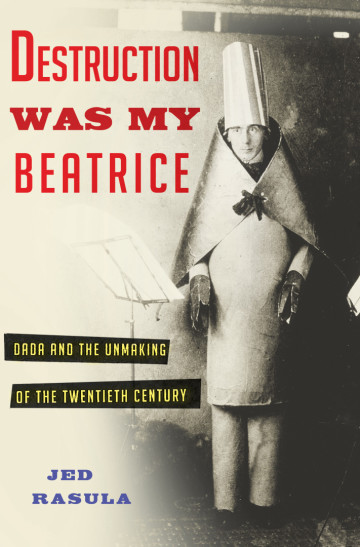
Originally published in the Marina Times San Francisco in November 2015
“Perhaps you will understand me better when I tell you that Dada is a virgin microbe that penetrates with the insistence of air into all the spaces that reason has not been able to fill with words or conventions.” Tristan Tzara
April 18, 1916. This was the day Hugo Ball first mentioned the term “Dada” in reference to the art movement that spontaneously erupted at 1 Spiegelgasse in Zurich, Switzerland, address of the Cabaret Voltaire. How can the performances, costumes, paintings and poetry that emerged during that time still wield such influence nearly a hundred years later?
Dada is a difficult term to precisely define. Tristan Tzara famously declared “The true Dadas are against DADA!” Da, da means “yes, yes” in Tzara’s native Romanian. Dada also means self-kleptomania, the essence of our time, and defiance of definition. The idea emerges as elasticity itself because, as Rasula says in his book, saying “No” is still saying something.
Rasula’s account doesn’t leave out the uncertainty of life in Europe during the first and second world wars that incited the audacious, insubordinate spirit of Dada. Groups of artists worked together and were scattered apart as the hostilities of combat and exile took their toll on the main players of Dada. Creativity materialized as a kind of collective defiance against the oppressive chaos that surrounded them.
Dada influenced and was inspired by the Futurist, Constructivist and Cubist art movements, all well represented in Destruction Was My Beatrice. Marcel Duchamp’s famous urinal signed under the pseudonym “R. Mutt” and displayed in a gallery as a sculpture called “Fountain” remains one of the most well-known Dada objects, though Duchamp evaded the label of Dada throughout his life. The author spends time discussing the influence of collage artist Kurt Schwitters and his Merzbau, a project which transformed his family home into a sculptural art space of angular protrusions, in essence a three-dimensional cubist painting. Francis Picabia, another early innovator of Dada and its younger sibling Surrealism, is represented as a dynamic painter and writer whose distinctive ideas converged with the major avant-guarde events of his lifetime.
Where do the lines intersect, and who moves the plot forward? Good histories read like a mystery unraveling over time, and this slow reveal keeps the pages turning. Rasula says “Without Dada we would have no mash-ups, no samplings, no photomontages, no happenings- not even Surrealism, or Pop art, or punk.” The fact that an influential art movement could be born from a small group of passionate artists under the duress of war, a movement that consistently evaded categorization and yet morphed across the globe as “a virgin microbe”, is a testimony to the resilience of the human imagination in all its self-contradictory complexity.